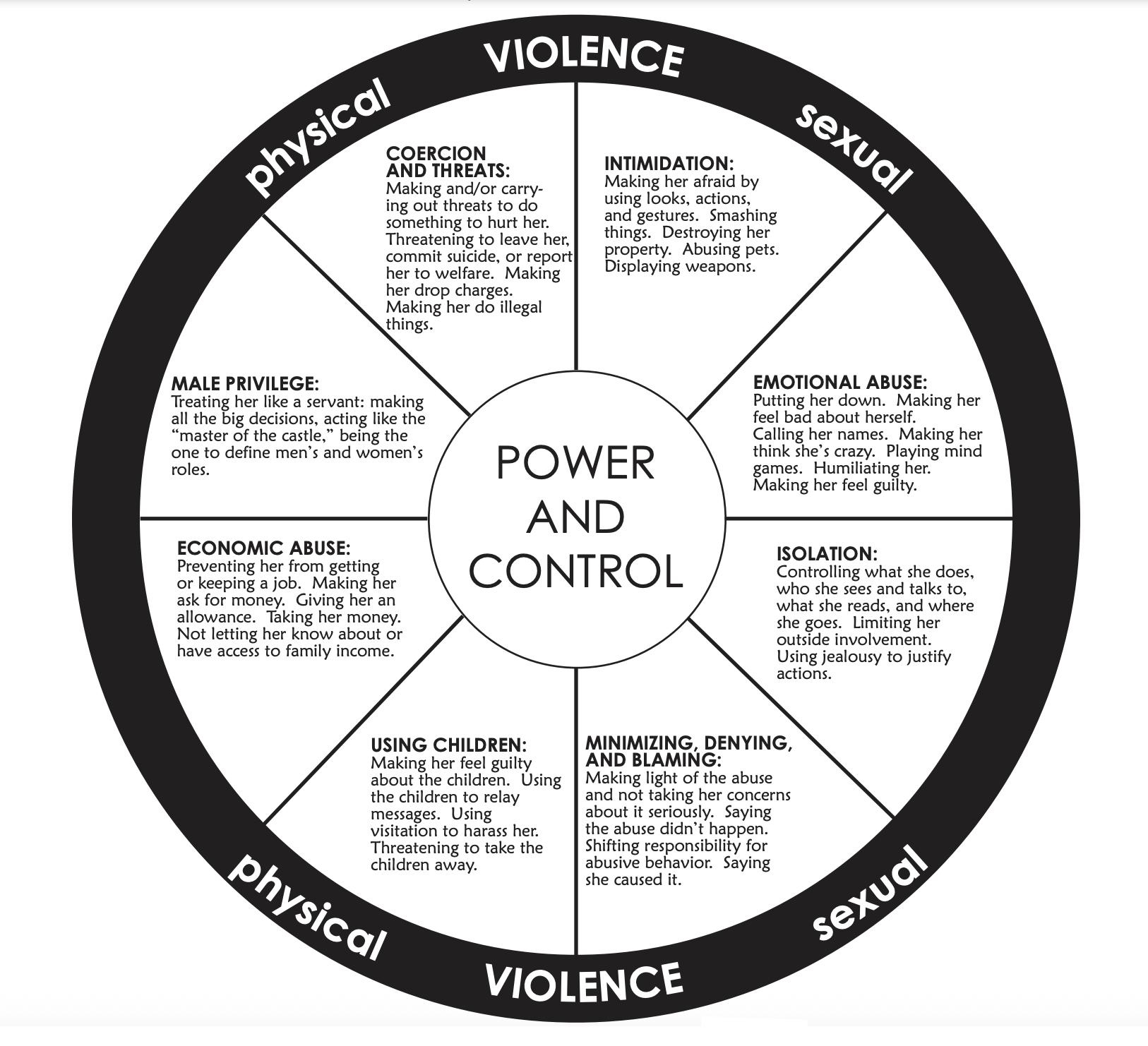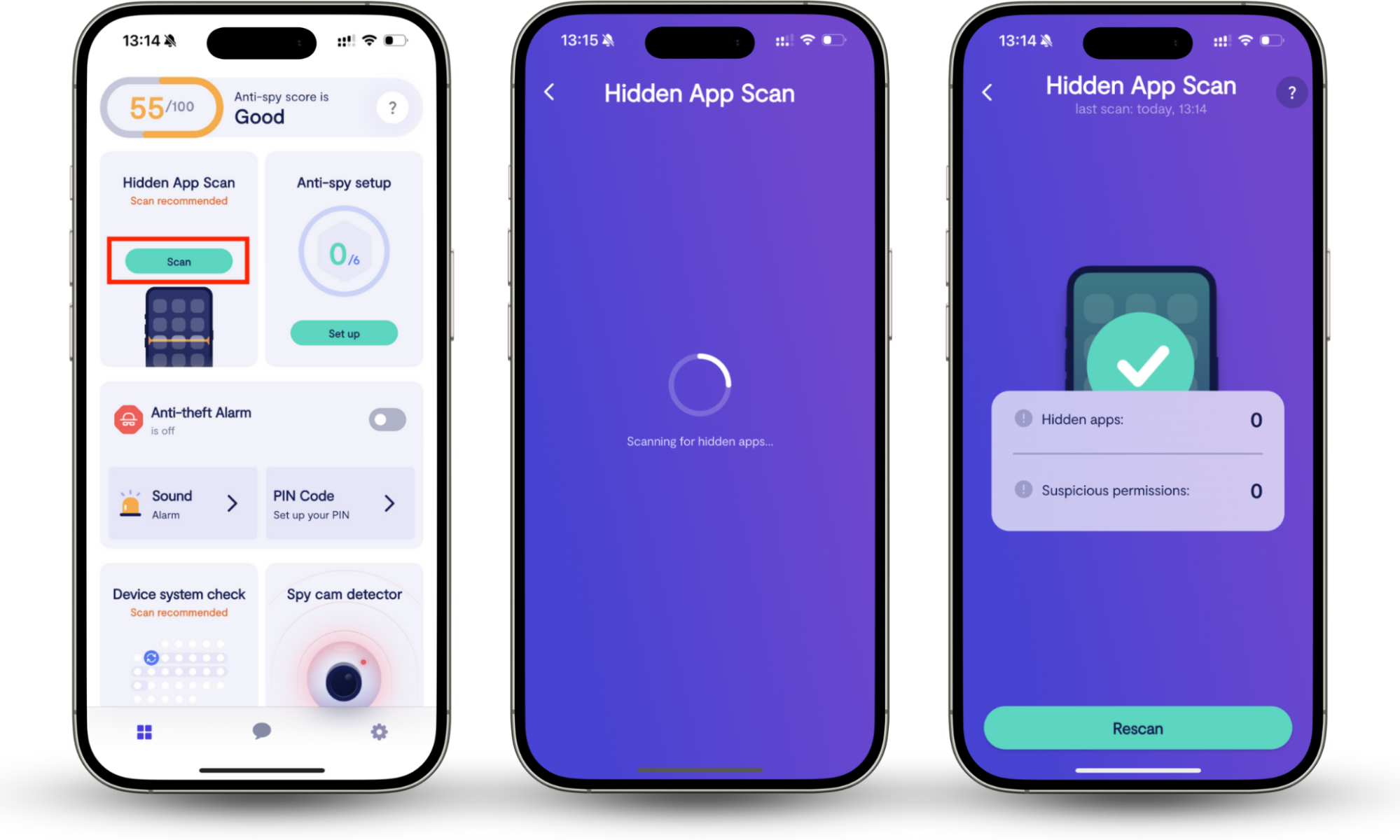Table of contents
- What is power and control wheel
- How does power and control wheel work
- 1. Coercion and threats
- 2. Intimidation
- 3. Emotional abuse
- 4. Isolation
- 5. Minimizing, denying, blaming the victim
- 6. Male privilege
- 7. Economic abuse
- How to deal with unbalanced power and control wheel
- Conclusion
What is power and control wheel
The power and control wheel is a visual tool used to understand abusive dynamics in relationships, particularly in cases of domestic violence and emotional abuse. Developed by the Duluth Model, the power and control wheel outlines various tactics abusers use to maintain control over their partner, from emotional manipulation to physical violence.

Below, I’ll explore these tactics abusers use to control their partners. Understanding how these cycles work can empower victims to recognize how abusers behave and take steps toward safety and independence.
- Coercion and threats. The abuser uses fear to force a victim to do what they’re told, saying things like, “If you leave me, I’ll ruin your reputation at work”.
- Intimidation. They make you feel unsafe without even touching you—think slammed doors, a fist through the wall right next to your head, or a knife placed on the table to “make a point”.
- Emotional abuse. Insults, humiliation, and gaslighting, and love bombing are central components in the power and control wheel that illustrate how emotional abuse keeps victims dependent and self-doubting. This rollercoaster keeps victims coming back for the occasional “good moments”, but these moments become shorter and less frequent with time.
- Isolation. It usually includes cutting off your lifelines by guilt-tripping you out of seeing friends, needing approval for your plans, taking the car keys away, or quietly deleting contacts from your phone.
- Minimizing, denying, and blaming. The abuser dodges responsibility and rewrites the story, saying phrases like “It was just a joke”, “you’re too sensitive”, or “you made me do that.”
- Economic abuse. The abuser locks down money and financial options, blocking you from working, seizing your paycheck, tracking every purchase, or opening credit in your name.
Over time, these tactics can create a trauma bond relationship, where the victim feels deeply connected to their abuser, despite the harm that’s being caused. This can make it even harder for the victim to break free from the abusive cycle. Recognizing these signs can help individuals identify and escape abusive situations.
Get help!
If you or someone you know is experiencing emotional abuse from a loved one like this, consider reaching out to the National Domestic Violence Hotline.
How does power and control wheel work
The power and control wheel isn’t just a list of tactics—it’s a map of how control works in an abusive relationship.
The wheel shows how different kinds of abuse—emotional, financial, physical, and even digital—are all used together to trap someone in a cycle of fear and dependency. It's not just about isolated events, but a long-term system of control that builds up over time.
Each tactic of control through violence serves a specific purpose: to isolate the victim, make them feel worthless, or induce a sense of constant fear.
Example
In the power and control wheel, violence control can appear when an abuser slams a door, raises a hand, or breaks something nearby—not to cause injury, but to remind the victim who holds the power.
1. Coercion and threats
Coercion and threats are all about fear and exerting control. It’s when someone uses intimidation or the threat of consequences to make you do what they want. Sometimes, it’s about safety—threatening to hurt you, your kids, or people you care about. Other times it’s about stability—saying they’ll cut you off financially, take away the car, or stop paying the bills if you don’t comply. The goal is always the same: to make you feel trapped and powerless to make your own choices.
2. Intimidation
Intimidation tactics are part of a larger pattern of violence control, where the abuser relies on threats, aggression, and constant psychological pressure to keep power. They don’t always need to use physical violence; the fear they create does the work for them.
A study from the National Coalition Against Domestic Violence showed that 53% of victims of domestic violence report that their abuser used intimidation in some form. Survivors described feeling like they had to calculate every word and action to avoid triggering another outburst. The research also highlighted how intimidation often leads to severe emotional stress, job instability, and a higher risk of repeated violence. It’s not just a single act—it’s a method of keeping someone small, silent, and scared to act freely.
3. Emotional abuse
Emotional abuse is subtle but deeply damaging. It undermines the victim's self-worth through belittling, humiliation, and constant criticism. An emotional abuser often makes the victim question their reality and self-esteem, creating a trauma bond between them and the abuser.
A case study from Domestic Shelters shows how emotional abuse can be as harmful as physical abuse in long-term psychological damage. One of the survivors spoke about how her partner would regularly insult her appearance, making her feel worthless and dependent on him for validation. This left her isolated and confused about her worth, which undoubtedly affected her future relationships and life.
4. Isolation
Isolation is controlling the victim’s ability to interact with others, whether by limiting their access to family and friends or preventing them from leaving the home. This tactic is designed to make the victim more reliant on the abuser for emotional and social support, while also cutting them off from any outside help or resources that could lead to escape. This isolation could also involve discouraging the victim from seeing their children, limiting their interactions with others, or even monitoring their movements.
If you ever sense that someone might be tracking your phone or watching what you do, that feeling alone is terrifying. No one deserves to live under such pressure. That’s exactly why Clario Anti Spy exists. Its Hidden app scan can check your phone for disguised tracking apps or permissions that shouldn’t be there, giving you a clear picture of what’s happening. It’s built for situations like this—to help you take back a bit of peace and privacy when things already feel overwhelming.
Here’s how to use Clario Anti Spy’s Hidden app scan:
- Open Clario Anti Spy on your phone.
- Tap the Hidden app scan feature.
- Let the scan do its thing—checking for any suspicious apps.
- If it finds anything, you’ll get a list, and you can easily remove any app that feels off or invasive.

5. Minimizing, denying, blaming the victim
Abusers often downplay their actions, deny their behavior, or reverse-blame the victim. This psychological manipulation, called gaslighting, makes the victim doubt their perception of events, often leading them to feel responsible for the abuse. This tactic can make the victim feel isolated in their experience, unable to seek help because they doubt whether the abuse is "real" or justified, often afraid others will blame them too.
6. Male privilege
In some relationships, especially those rooted in gendered dynamics, male privilege plays a real role in maintaining and establishing control. The abuser may invoke societal or cultural stereotypes to reinforce their dominance, using phrases like "this is a man’s job" or "you should be doing this for me".
This tactic is used to make the victim feel inferior and impose the idea that they are subservient to the abuser's wishes. The man controls resources, decision-making, and even space within the home as his “appropriate gender role”.
7. Economic abuse
Economic abuse is a tactic where the abuser seeks to control the victim’s access to financial resources. This may involve restricting access to money, preventing the victim from getting a job, or controlling how money is spent. The abuser may also sabotage the victim’s efforts to gain financial independence by preventing them from attending work or school. Economic abuse leaves the victim feeling dependent on the abuser and less likely to leave the relationship due to the lack of financial security.
How to deal with unbalanced power and control wheel
Living through emotional or domestic abuse can make you feel trapped and unsure where to start. If you recognize patterns that match the power and control wheel used to describe domestic violence, you’ve already taken the first step—understanding what’s happening.
Now, it’s time to shift focus from what’s happening to you to how you can start reclaiming your space, safety, and voice—for your own good and safety.
Here’s what to do:
- Recognize what’s really going on. Start by naming it. Abuse isn’t just physical; it’s about control. Once you can see the patterns—the guilt trips, the fear, the isolation—the abuser starts losing their power.
- Create small, realistic boundaries. Every small “no” is a step toward rebuilding your sense of self.
- Reach out for support. You don’t have to handle this alone. Talk to a friend, family member, therapist, or local hotline. Having someone confirm that what you’re experiencing isn’t okay can help you see your situation more clearly.
- Rebuild your sense of self. Abuse chips away at your confidence. Find things that remind you of who you are—such as reading, journaling, or joining an online support group. Healing doesn’t come overnight, but momentum matters.
- Protect your digital privacy. Abusers sometimes use phones or devices to keep control—checking messages, installing tracking apps, or unlocking your phone when you’re not around.
If you ever feel your privacy is being invaded or wonder how to find out if someone is remotely accessing your phone when you're not around, tools like Clario Anti Spy’s Unlock catcher can help. It quietly takes a photo whenever someone tries to unlock your device without permission, giving you proof and peace of mind—so you’ll know if anyone crosses that line.
Here is how to use Clario Anti Spy’s Unlock catcher feature:
- Download Clario Anti Spy for your device.
- Activate Unlock Catcher for protection.
- Monitor your phone for any unauthorized access attempts.

Conclusion
The power and control wheel is a way to understand how abuse works as a system. At its center are power and control, and around it are the tactics that keep that system spinning: intimidation, coercion, emotional manipulation, isolation, economic pressure, and physical or sexual violence. Recognizing how these pieces fit together helps you see the pattern, not just the moments.
If you or someone you know needs help breaking free from an abuser, your first line of defense and support should always be your friends and family. Victims can also seek support and a safe place at a local shelter. If part of that safety means securing your phone or cutting off digital control, Clario Anti Spy was designed to help you detect hidden apps and monitor access to take back your privacy.


